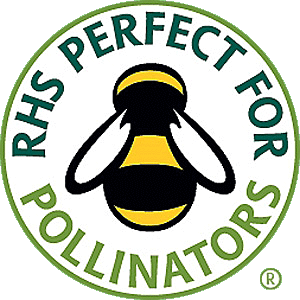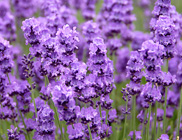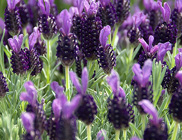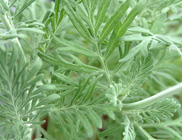Biography and History
I officially started Downderry Nursery in July 1991 in the garden of the parental home in Ditton, Kent. The nursery name comes from the property’s rear access road called Downderry Way which sounds more romantic and rustic than it was!
I’d been tinkering with sun loving shrubs and subshrubs for a while. Experimenting with different propagation methods and composts, including early peat free types (terrible), in my little 8’ x 10’ (2.4m x 3m) greenhouse.
The first foray into selling was at boot fairs and Women’s Institute (WI) markets, where in the case of the latter I spent most of any profit on WI bread, jam and cake. It was an inauspicious start!
My interest in lavender and rosemary had developed over the previous years and they formed a significant part of the offering. Initial stocks were bought in and there lay a problem – mislabelling. It was a dodgy start to find corrupted plant names or simply that colours had been mixed up. I soon realised that this problem was endemic in the lavender trade particularly with regard to intra colour errors. It was something I was determined to unravel and correct.
Initially I produced a photocopied plant list for distribution at plant sales, but with an eye to requiring something a little more polished for mail order sales. When the initial mail order list was mailed, encompassing the entire plant range, everyone went for lavender with a side of rosemary so, in short, I discarded everything else and ran with just those two genera and the specialism was born. My aim was then to create a centre of excellence for lavender.
By 1994 the nursery had spread from the back garden to the neighbour’s garden and their greenhouses.
A growing collection of lavenders took up residence in the front garden and in 1995 National Plant Collection (NPC) status was bestowed on those by The National Council for the Conservation of Plants and Gardens, now thankfully just called Plant Heritage. A charity aiming to conserve the diversity of our garden plants. https://www.plantheritage.org.uk. In 1998 the rosemary collection achieved NPC status too.
The 60 different species and cultivars of lavender I’d amassed were but a small slice of what was to come as I made contact with growers across the world, most notably in New Zealand.
Sales by mail order had grown and face to face sales had progressed through plant fairs to county shows and on to the Royal Horticultural Society (RHS) at their halls in London. We were awarded a silver medal at our first halls show in 1995 and in 1999 we exhibited at our first RHS Chelsea Flower Show and were awarded a silver medal. Many more medals and accolades followed over the next 20 years. 2012 proved to be an exceptional year. Click the link for more detail https://downderry-nursery.co.uk/multi-award-winning-nursery/. The RHS shows brought a whole new level of recognition.
By the spring of 1997 I’d employed Dawn to do a spot of bookkeeping. She later became my wife and an indispensable part of the nursery’s success.
In the summer of 1997 I began renting a 1.2 acre walled garden near Hadlow in Kent. It was a big step paying rent, taking on Dawn full-time and Simon Richardson, the chap who worked at the previous nursery in the walled garden.
With a pH of 7 the soil was good for lavender and rosemary, but the clay loam overlying sticky yellow Wealden clay required loads of grit to open the soil and raise the growing beds above the surrounding paths to improve drainage conditions.
The nursery opened to the public for the very first time in the spring of 1998 with just a small patch of lavender planted displaying the hardy and frost hardy types. The design of those beds remain to this day although the plants have been replaced four times!
There were now 3 arms to the nursery – mail order, shows and retail. There followed 20 years of juggling those in addition to supplying plants wholesale and renting the 2 ½ acre field outside the walled garden to grow lavenders for oil production, the purchase of a still and a multi-stemmed lavender breeding programme.
The nursery was put on a more secure footing with the purchase of the site and accompanying house in 2003. Thanks to my wonderful sister Jane for her initial help in this. Bucolic bliss (apart from the continued hard graft) had been achieved – an old walled garden in the middle of the English countryside, growing lavender. Dawn and I still pinch ourselves to be sure it was real!
During Downderry’s 33 years there was a core team of myself, Dawn and Simon. In addition to directing(?!?!) I designed the display garden, production area, field layout and show exhibits, wrote some articles in gardening and associated publications, co-authored a few chapters in the Royal Botanic Garden Kew monograph ‘The Genus Lavandula’ and gave many talks/lectures. Dawn did the accounts, ran the mail order brilliantly and made the toiletry products and Simon was on production – cuttings, potting, watering, trimming, pruning, harvesting etc as well as constructing everything I’d designed, all with great energy and efficiency! We all chipped in where and when we were needed. A further 30 bods also worked on the nursery at one time or another in a full-time, part-time or temporary capacity and family and friends who helped at the shows. We’re indebted to them all.
Even at it’s peak Downderry produced a mere 120,000 cuttings a year selling them as plugs, 9cm pots through to 5 litre pots. Some were reserved for planting/re-planting in the walled garden or field and others for show exhibits. As a NPC holder it was important to ensure all plants be correctly identified and to this end we sought to produce all plants in house from our own stock plants to guarantee they were true to type.
In 2009 the NPC of lavender had swollen to about 400 different species and cultivars and was granted scientific status. This status is given to those who have gone beyond collecting plants to conserve them and catalogue their provenance, to include researching the interrelationship between different species and cultivars, the best propagation methods, pest and disease control and other cultural techniques. The collections have now been passed on, the lavender to the RHS and the rosemary to the nearby Great Comp Garden.
In 2000 we began several breeding programmes each with different aims. Firstly, to produce new lavender and rosemary for the garden market, secondly to produce improved oil yielding lavenders for commercial growers in Kent and later yet another aim which involved tinkering with plant material in the lab to produce unique traits and opportunities by inducing tetraploidy, producing 4 sets of chromosomes instead of the usual 2. The latter required a lab and additional expertise. East Malling Ornamentals close by at East Malling Research facilities undertook the research with the project grant aided by DEFRA (The Department for Food and Rural Affairs). Tetraploid lavenders resulted in larger leaves, stouter stems and larger calyces. Calyces carry most of the oil and from which the flowers emerge. In theory these lavenders could produce more oil. In some cases it also created fertility in previously sterile varieties so they set seed.
We had many articles in the press and garden magazines over the years, but none more important than in a German gardening magazine in the mid 2000s. The magazine was read by the general manager of a large garden centre chain in Germany, while he waited in a hairdressers for his wife. What he’d read was of a quintessentially English family run plant nursery in a walled garden that sold their plants in purple pots with a particular marketing strategy and a high public profile. He was interested in the konzept (concept), put the idea to the garden centre group and spoke to one of their suppliers called Hans Müller of Helix Pflanzen GmbH. Hans contacted me and said that the garden centre chain wanted to market the konzept. We supplied initial plant stock for Hans to multiply and over several years we supplied products (shower gel, bath foam, hand cream etc) by the pallet to accompany the plants they produced. The name Downderry Nursery was then trademarked in Germany, Switzerland and Austria. All rather mind boggling in the light of our very humble beginnings. Hans deserves a special mention as one of the finest nurserymen/businessmen I’ve had the pleasure of meeting.
Through all the years we’ve never wanted for business it just seemed to flow in, a sure sign, I think, that we did the right thing. There were many challenges, as there are with any family run business and we didn’t always get the ‘right thing’ right. We had plenty of opportunity to expand, but I wanted to keep the nursery small so we could always focus on the plants, offering superb choice, unrivalled expertise and a personal service.
Simon Charlesworth
aka Lord Lavender of Downderry (tongue in cheek)







